
|
NEWSLETTER #54 - MARCH 2006
Members will have noticed that the US pages sometimes carry an earlier date than the main newsletter. This is because the US page is added to the main paper newsletter when it is circulated in the US in arrear of the UK edition, so it is actually published between UK paper editions.
Page 1 | Page 2
Positioned on the narrowest point of the South Atlantic Brazil was both a gateway to South America from Europe and a valuable destination in its own right. In the 1930s the former colonial powers Spain and Portugal was economically depressed and did not develop significant commercial aviation. The initiative to develop service from Europe was therefore contested between France (Aeropostale, Air France) and Germany (Lufthansa, Deutsche Zeppelin Reederei and their Brazilian offshoot Syndicato Condor) All published postcards, particularly for the Christmas/new year mail.
Left Condor card with Dornier Wal & Zeppelin. Right Aeropostale, with Latecoere 17
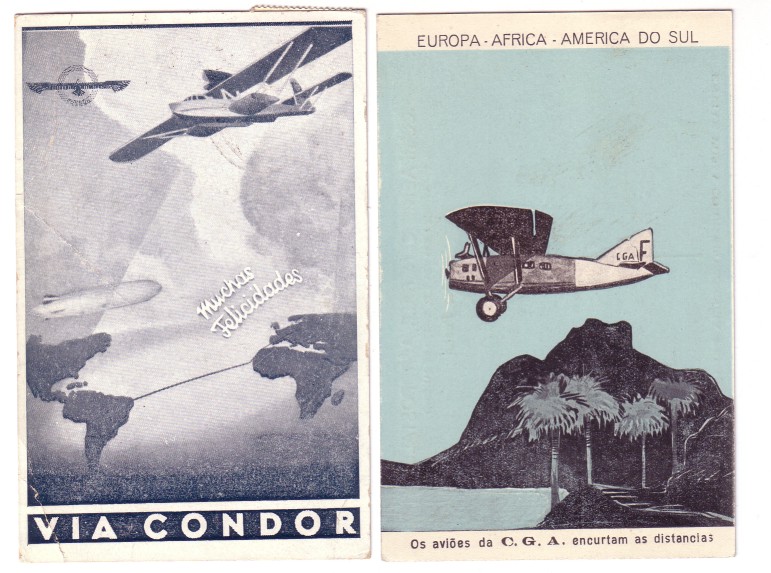
During WW2 the German owned Condor Syndicate was taken over by the Brazilian State and renamed Cruzeiro Do Sul ( Southern Cross). In the 1990s Cruzeiro was absorbed by VARIG which had started life as a partner of Condor in the 1920’s, not expanding in its own right until 1939. VARIG issued this next history card of a Focke Wulf Condor operated by Condor at the airport of Porto Alegre where VARIG was founded.
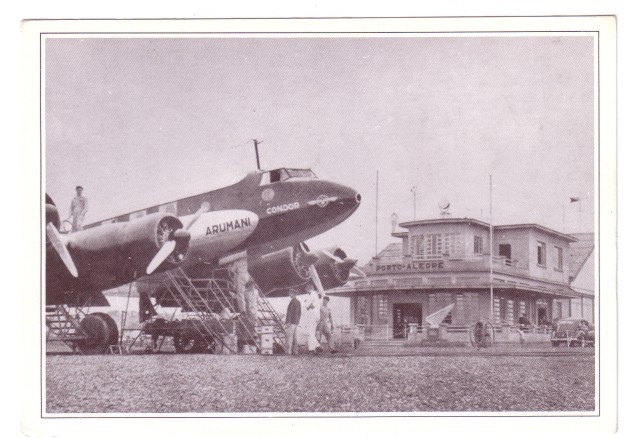
deHavilland had some success with their light biplane transports in South America. Sao Paulo airline VASP was founded with Dragons and Monospars in 1933, and much later issued this history card.
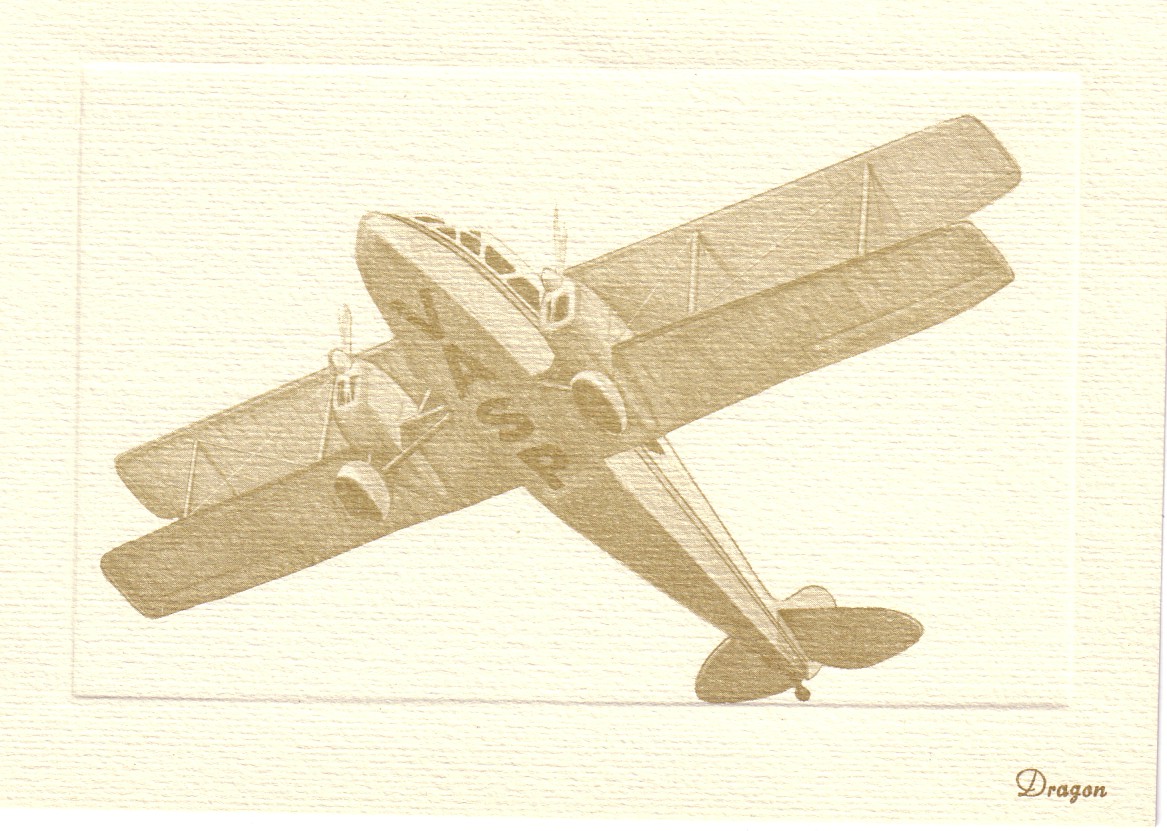
The origins of Panair do Brasil as Pan Americans Brazilian subsidiary are touched on in the piece on Rio – Santos Dumont airport. By the late 40s they would commence service to the US and Europe with 049Constellations, as here.. Later these gave way to DC-7C s and DC-8 s before the company,
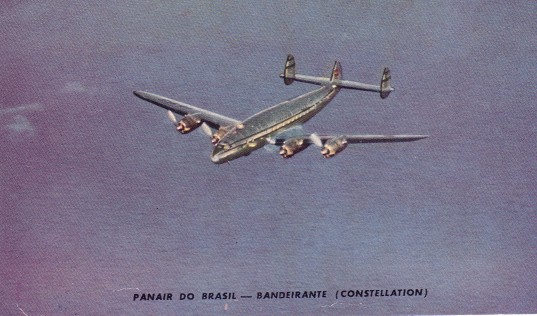
The dominant force in domestic airlines was REAL, founded in 1946, initially as a DC-3 operator but later moving up to Convairs and Super Constellations as on these cards.

REAL, like all the others was absorbed by VARIG in 1961. VARIG was by this time a jet operator, having just taken delivery of 707 s to take over the existing jet service to New York operated by Caravelles, backed up by L1049G Constellations. Both these cards have a Rio-NY map on the back.

Meanwhile, Cruzeiro, the one-time Condor, was also a Caravelle operator. But they too were shortly to fall into the hands of VARIG in 1975 – although the name continued to be used for almost another 20 years, appearing on 727s and 737s.
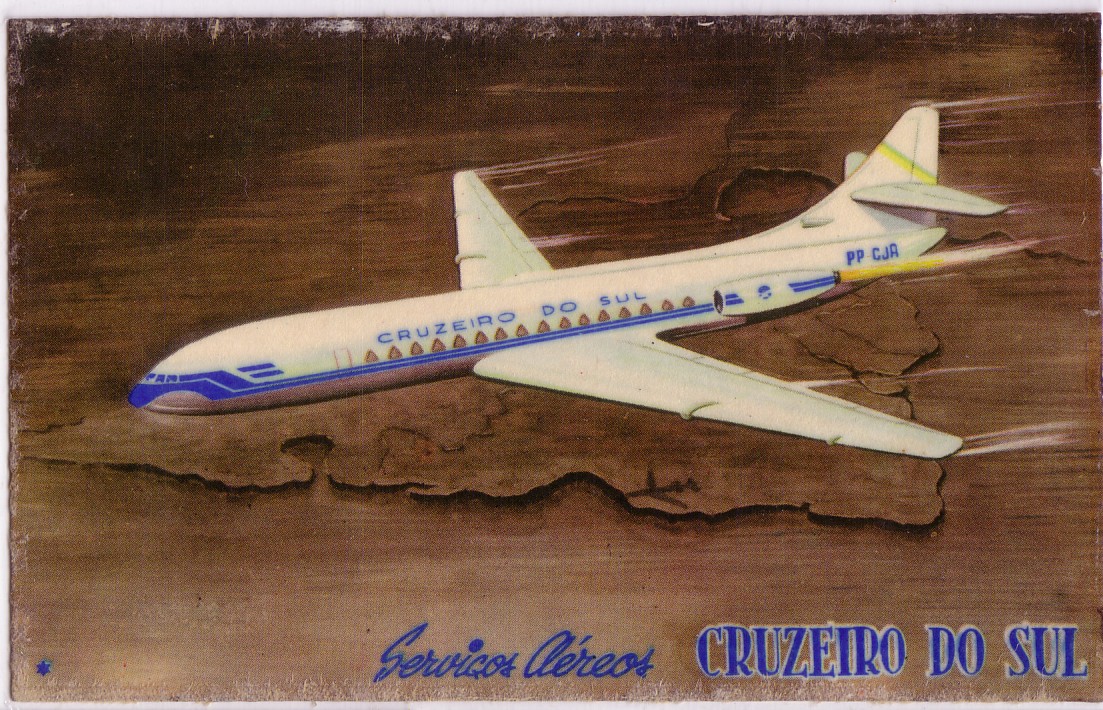
It might seem that VARIG had become a monopoly but VASP were still around, also now with 727s after Viscounts and 111s and new airlines had also been formed and prospered. Among these was another operator of British- built Heralds and 111 s, SADIA, founded 1955. The right hand card is in those titles but the back logo is overprinted with the new title of Transbrasil which appears on the left card .
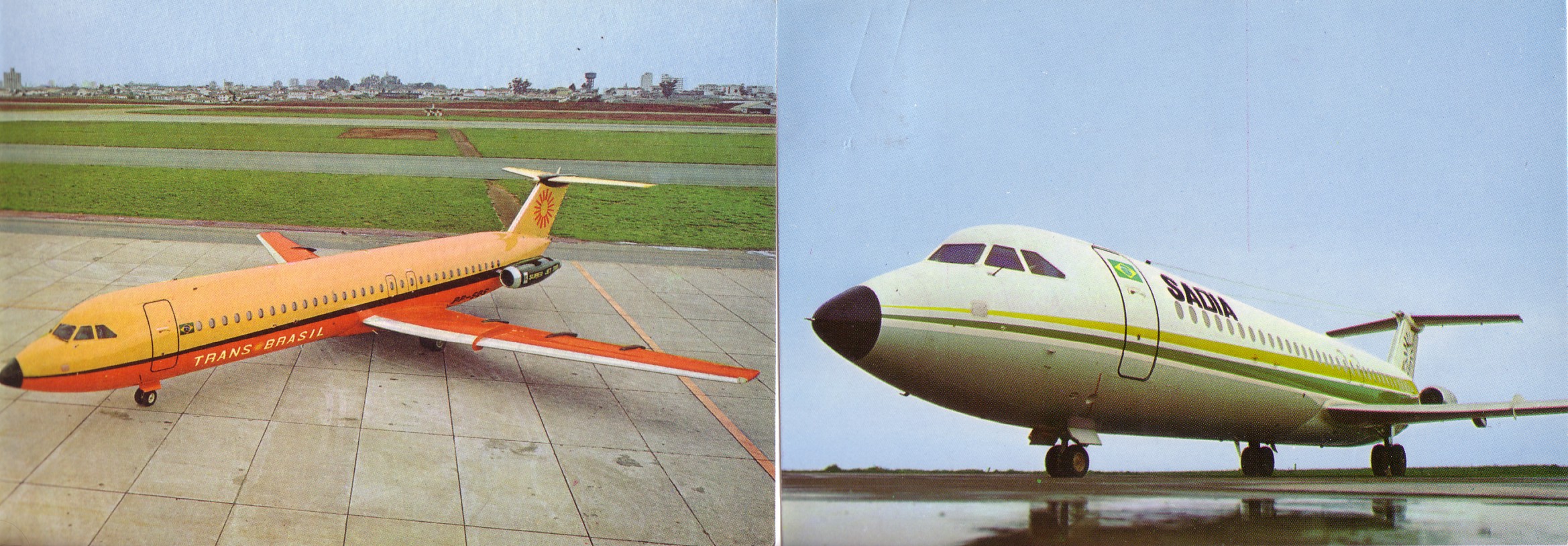
Transbrasil went on to be Boeing operators of 727,737 and 767 before collapsing in 2001. This time VARIG itself was in no state to pick up the pieces. It was facing competition on its international and domestic services from TAM – a 1976 start-up initially with Fokker F27, F100 and later Airbus A320 and A330. Later Transbrasil and TAM cards follow. The Transbrasil 767 shown from above recalls many earlier Movifoto cards.
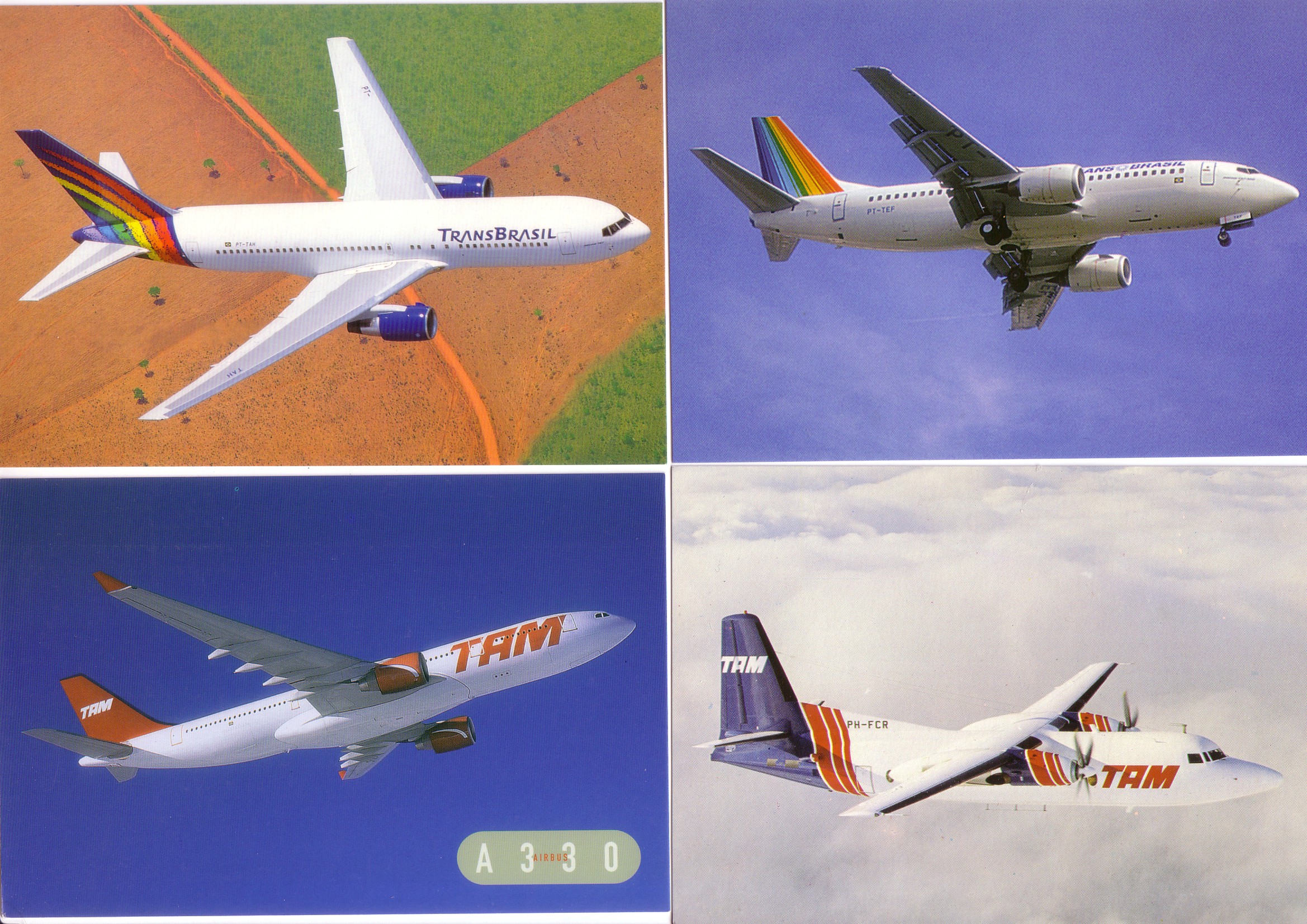
The long established VASP also collapsed in 2005. It had expanded into long-haul and acquired a small fleet of MD-11s, as also had VARIG. MD-11 cards were the last known from both airlines. Although VARIG is now phasing them out for 777’s its financial future is uncertain and there have been discussions with TAM. In recent years VARIG has been the official carrier for Brazilian football and the MD-11 is painted to reflect this. Between the current fleet and the MD-11 era the company has also issued 727 ,737 ,747 ,767 ,CV990 ,HS748 Electra and DC-10 cards, with the two shown probably being the hardest to find
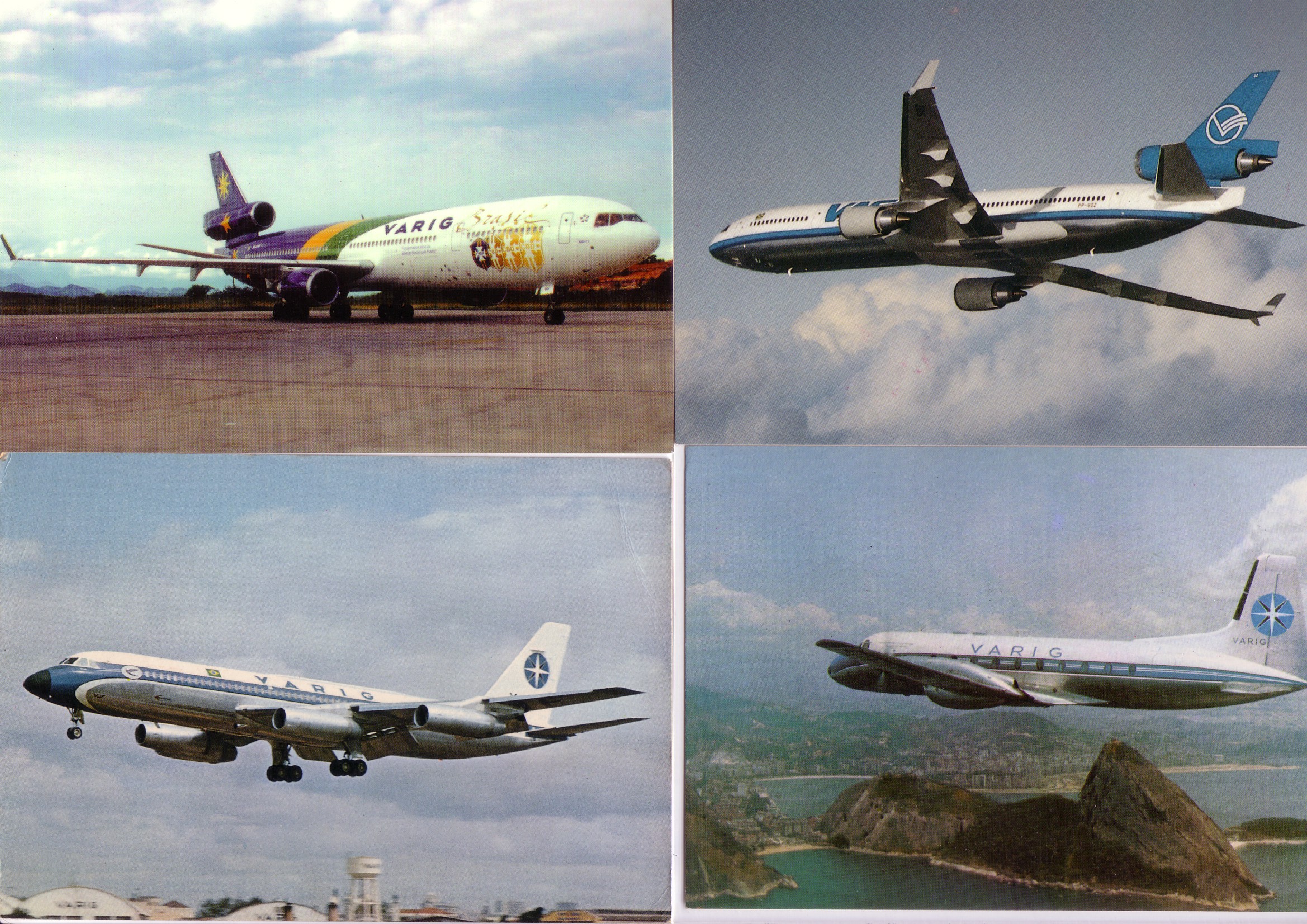
Before its financial troubles VARIG had continued to take over other companies, although the most recent ones retained their names while adopting a VARIG livery. Such were Rio Sul and Nordeste. The Nordeste card was also produced in identical form but with Rio Sul titles after that company’s takeover.
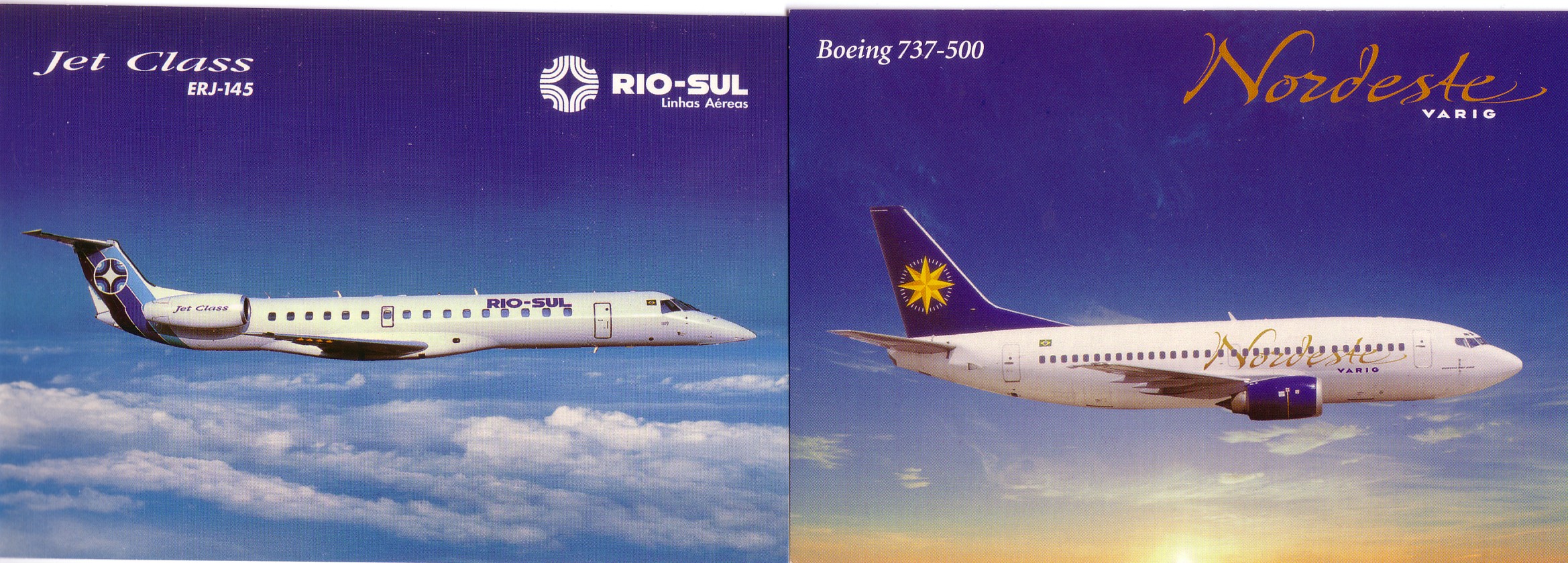
The Rio Sul card features the Embraer ERJ-145. Unfortunately the decline of the airline issue postcard coincided with the rise of this Brazilian regional jet in the fleets of the worlds airlines so it is relatively under represented. Also under-represented are the latest generation of Brazilian airlines. One short-lived carrier ViaBrasil produced a 2000 new year card with views + a small model 727 on the face but this larger image on the writing side. New low-cost, one-word-name carriers such as Gol ( = Goal, of course) have not produced cards themselves but see later. The card below of local carrier Aero Express of a Cessna Caravan does however appear to be airline issue
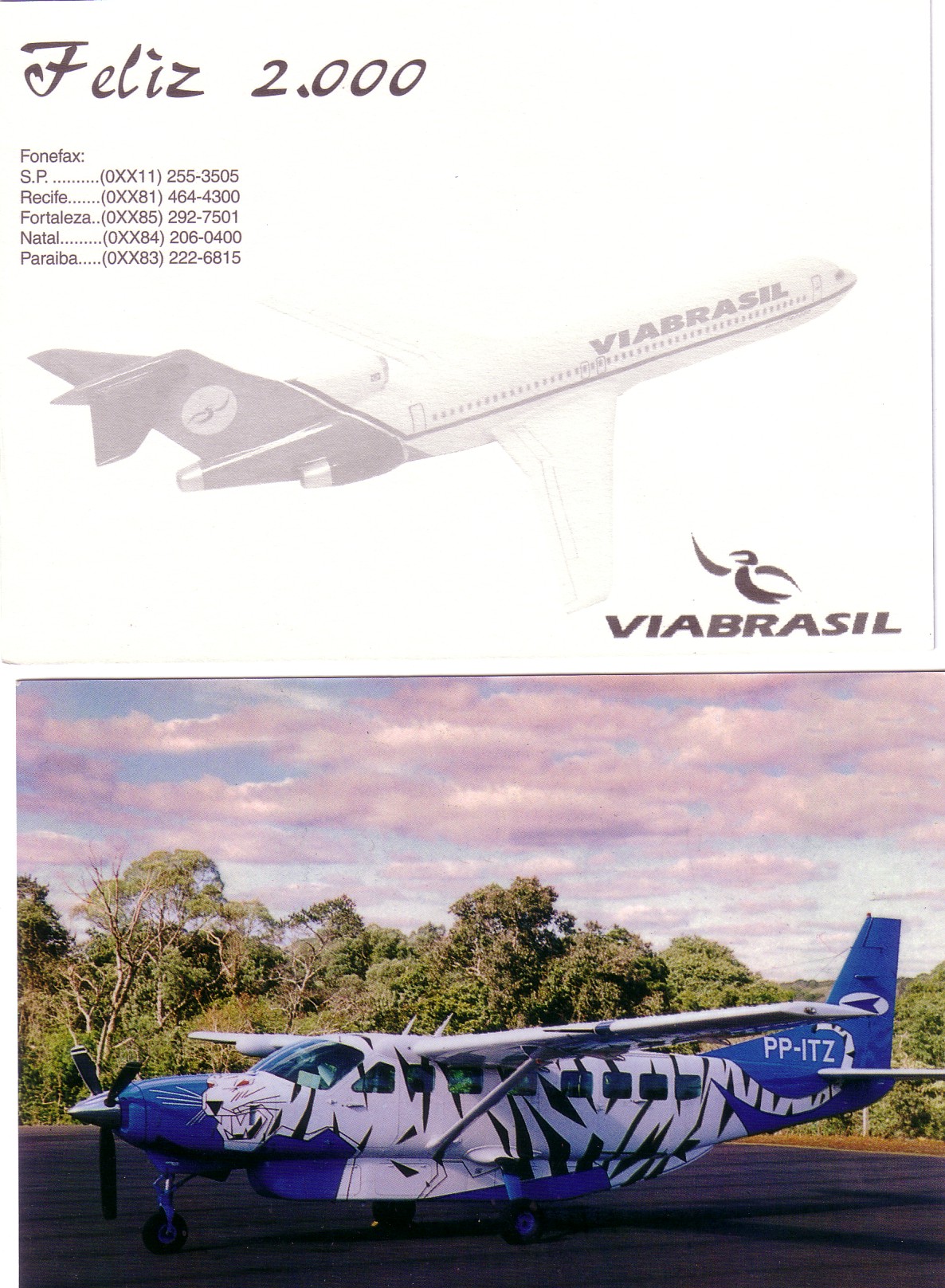
From Frank Litaudon, apparently a Sud issue card to commemorate the delivery of the first VARIG Caravelle – the back is autographed under a pre-printed message and has a special postmark.
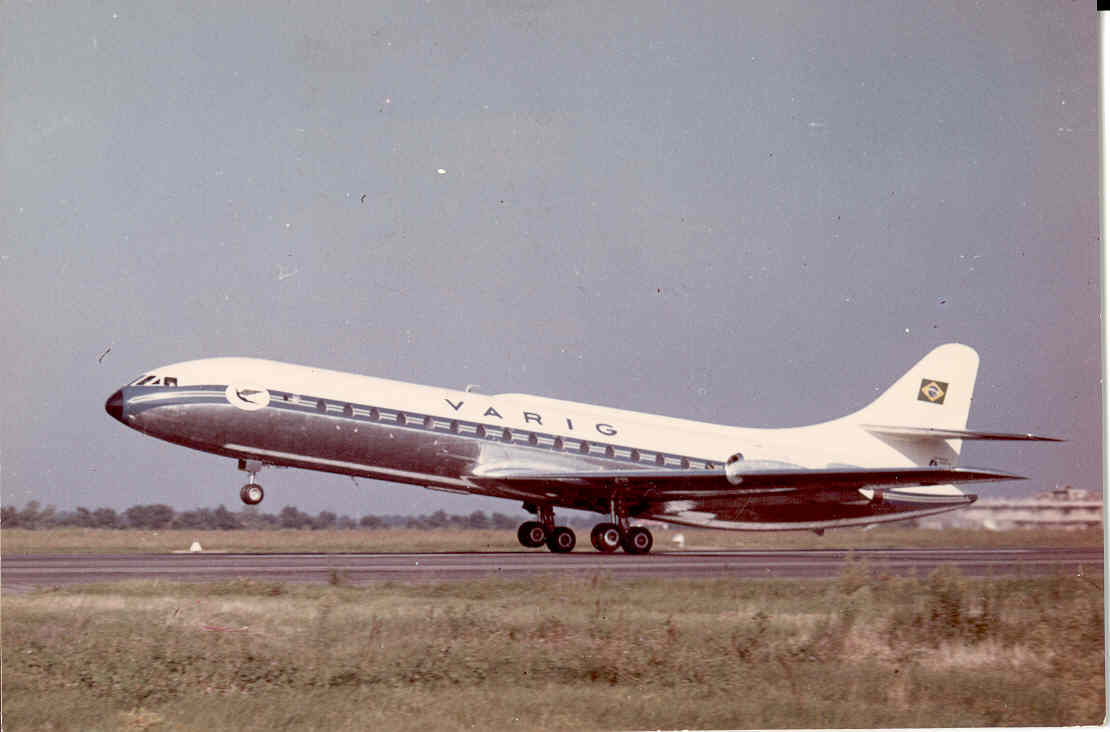
Low cost carrier Gol 737 features on this Porto Alegre airport card with an F100 of Tam and VARIG group 737
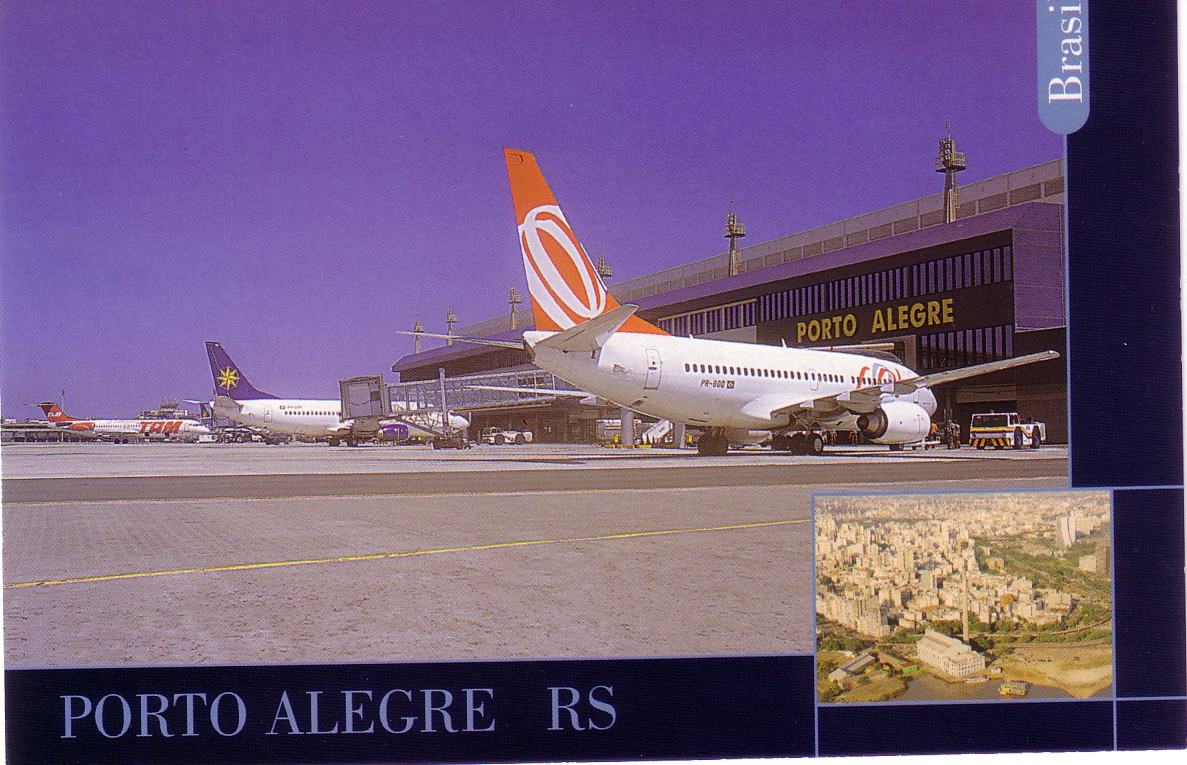
The airport now known as Santos Dumont is currently the “downtown” airport for Rio de Janeiro and operates regional services, notably a shuttle service to Sao Paulo. The airport is situated on reclaimed land in Rio harbour and its first use for aviation was to serve the pioneering NYRBA (New York, Rio and Buenous Aires Airline) Curtiss Commodore flying boats. All operations in Brazil were nominally by a subsidiary NYRBA do Brasil. NYRBA gained little from its pioneering work, being absorbed for Pan American by their Brazilian subsidiary, Panair do Brasil in 1930. This real photo card (from a photocopy) shows one of the Commodore boats at the future Santos Dumont in the markings of Panair do Brasil.

Only 2 km from central Rio it rapidly became the city’s airport for domestic and later international service, until being replaced by Galeao. Its origins in maritime operations are recalled by the proximity of the ramp to the harbour waters as shown on some of the following cards, including this air view which also shows the proximity to the city centre. 1960s judging by YS-11 and Electra on ramp but also lots of DC-3 and a Fairchild Packet.
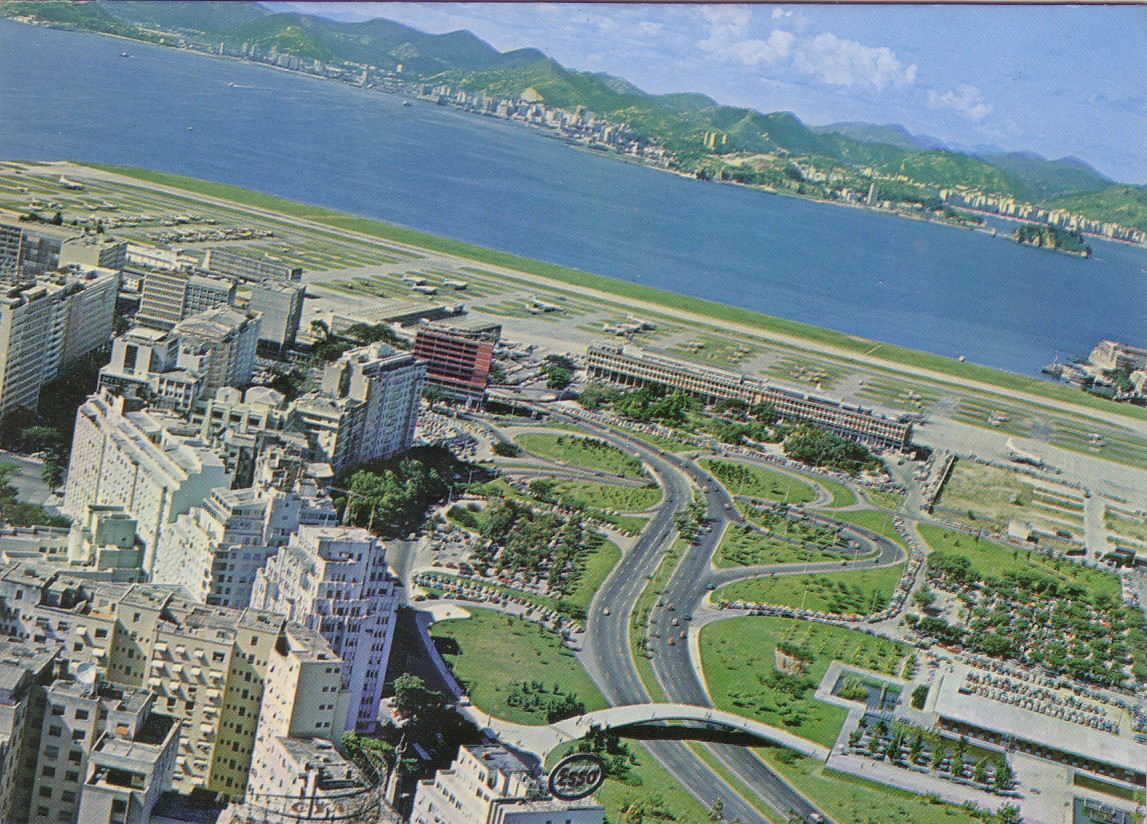
Now two real photo cards. A waterside Panair L049 Constellation – this card is usually found plain-back although with “Rio Aereoporto” text on the face as here.
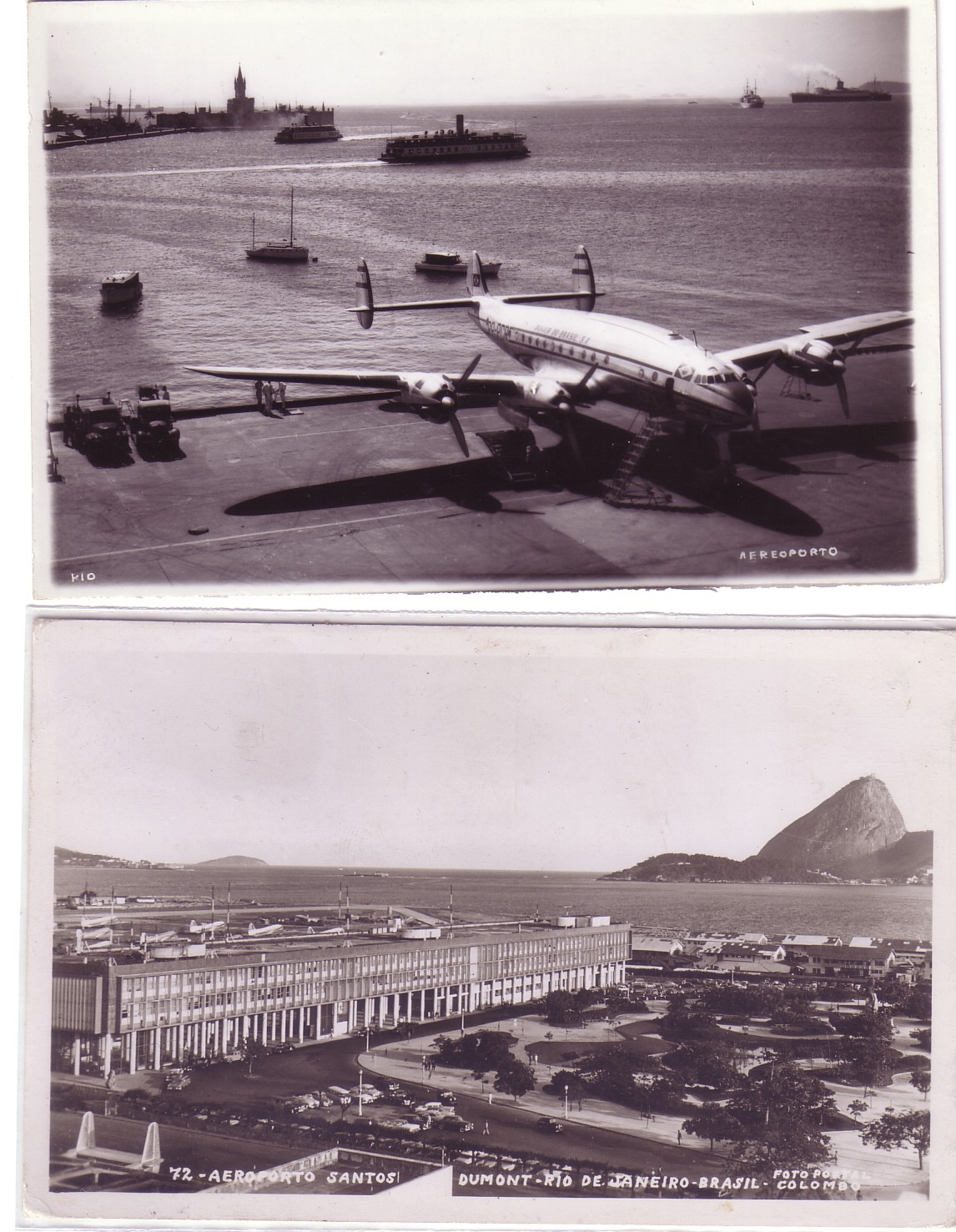
Below a wider view again features a Packet foreground and a selection of that least-postcarded airliner, the Curtiss C-46 background. ( Colombo card 72) – by the time it was mailed the writer was on a “wonderful trip by jet – 10 hours from New York.
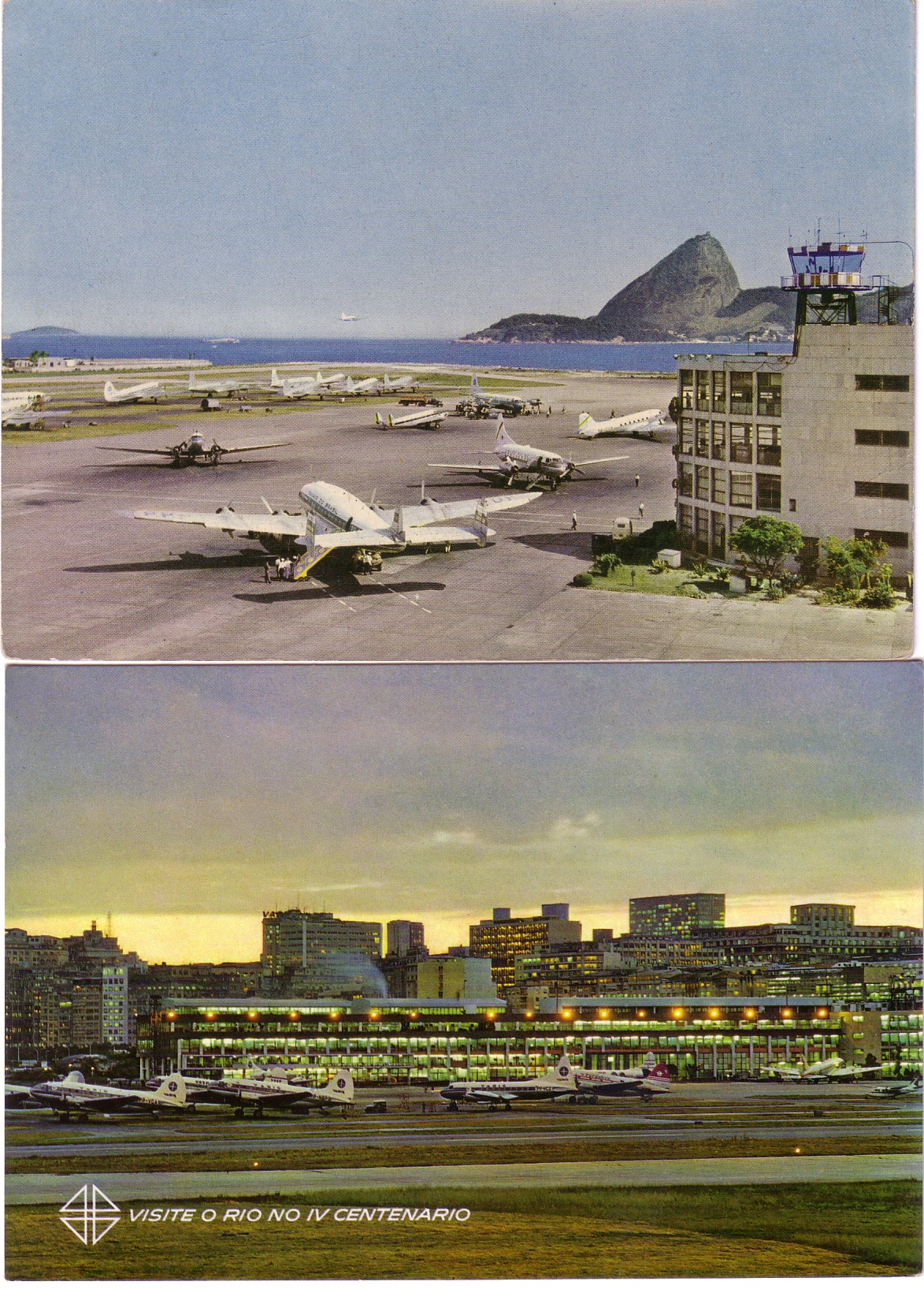
Next some “chromes” . Another Panair Constellation + (?) DC-7C + Cruzeiro Convairs, DC-3s and C-46s, VARIG Electra and C-46s. Also an Air Force Lodestar. Fascinating mix on Grafica Franco Brasiliera No 132. Also look city-wards at duck with more C-46s of VARIG and Paraense, VARIG Convair, VASP Viscount by Italbras of Sao Paulo 1964.
SANTOS DUMONT – THE MAN & THE AIRPORT THE MAN
Many countries have put forward alternative claims to the Wright Brothers to be the pioneers of powered flight. The UK points to the experiments of Henson and Stringfellow, France to the designs of Clement Ader, the USSR of course had its claimant. Some Brazilians point to the fact that its pioneer Alberto Santos Dumont was authenticated as having flown a powered flight in 1906 and query whether the Wrights flew as early as is now accepted. Even allowing for the fact that normally “nobody remembers who was second” the achievements of Santos Dumont, below, are considerable.
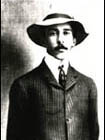
Alberto Santos Dumont was born July 20, 1873, youngest of 11 children of a family whose wealth derived from coffee plantations, in the State of Minas Gerais, Brazil. At the age of 18, he was sent by his French father to Paris where he devoted his time to the study of chemistry, physics, astronomy and mechanics. His first spherical balloon, "Brasil,” with 113 cubic meters capacity, made its first ascent in Paris on July 4th, 1898. His second balloon, "America," had 500 cubic meters capacity and won Santos Dumont the Aero Club of Paris’ prize. Twelve balloons had participated in this competition but "America" reached a greater altitude and remained in the air for 22 hours. The then turned to the development of the steerable balloon ,dirigeable or airship. His first steered balloon, "Santos Dumont no. 1," flew in September 1898. , followed by an unsuccessful "Santos Dumont no. 2," and "Santos Dumont no. 3," which performed a circuit of the Eifel Tower in November 1890. The wave of enthusiasm for aviation that followed this flight prompted the foundation of The Aero Club of France and the offering of a prize ( La Coupe Deutsch) by M Deutsch de la Merte for the first flight round the Eifel Tower from a base at St Cloud with return to base within 30 minutes. This prize was won by Santos Dumont on October 19th, 1901, with his latest airship, no. 6. Besides this prize, Santos Dumont received the sum of 100,000 francs which he distributed in equal parts to his workers and the Paris poor. He subsequently had 3 more airships built and , in 1903, flew No 9 over the 4th July parade at Longchamp. In addition to competitive and promotional work Santos Dumont was probably unique then and now in using an airship for personal transport, being known to land outside fashionable cafes. For use during his airship flights Santos Dumont commissioned what is believed to have been the first wrist-watch for men from Cartier. British card of the 1901 flight in the “Lightning” series of Flying Machine Postcards by Edward Cook Ltd, Soap Merchants.
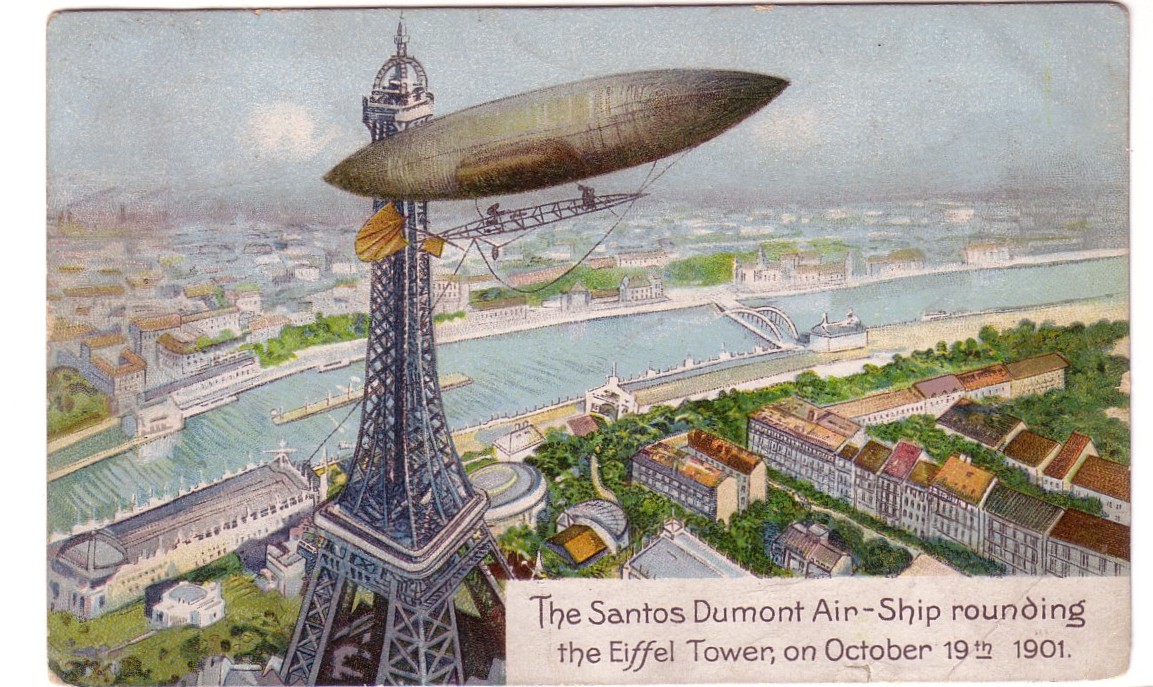
Thereafter, Santos Dumont turned to heavier than air development, including glider and rotary wing designs This resulted in the tail-first 14Bis design which flew successfully for 50 metres on 23 Oct 1906 card below. This was the first verified heavier than air flight in Europe. By November 14bis had achieved 220 metres at a height of 6 metres at 37 km/ph. This card is of the October flight.
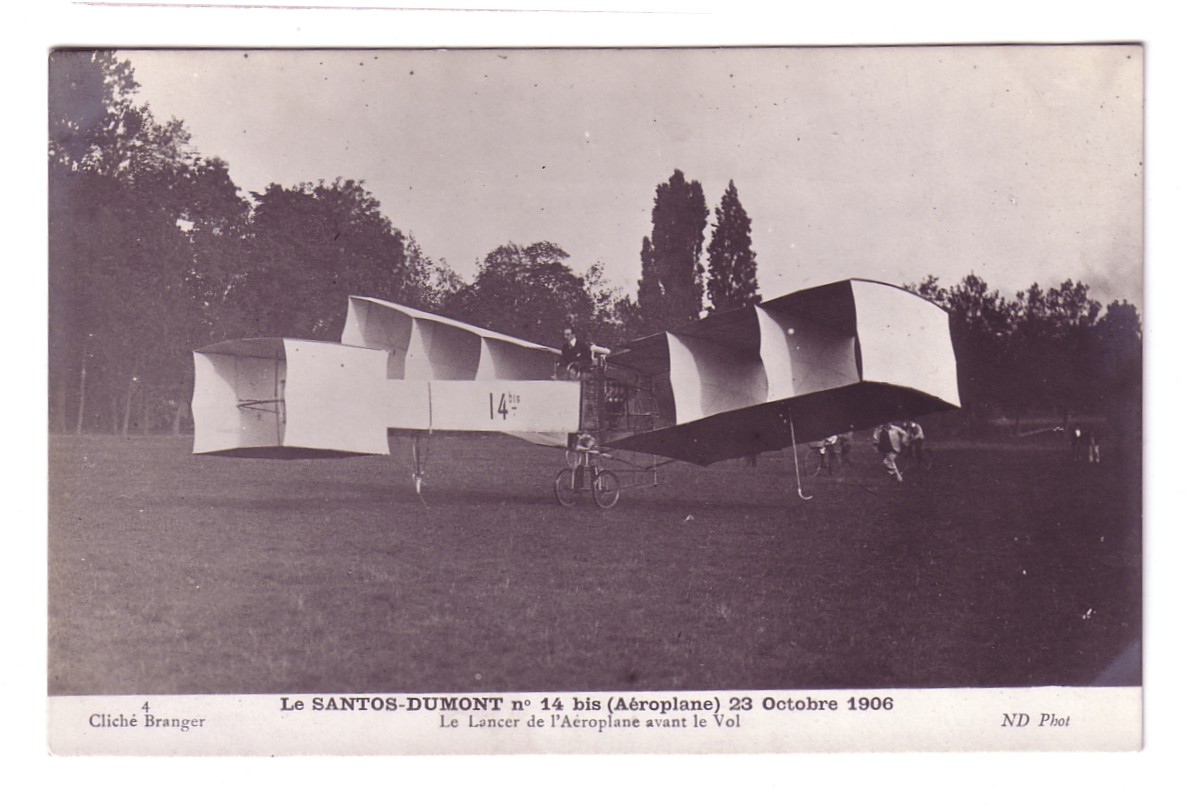
Santos Dumont’s final design was in many ways the most advanced and, when also adopted as his personal transport, was the equivalent of the modern light or ultra light aircraft. This was the Demoiselle of 1909. Four versions of this high wing, bamboo frame design were constructed by Santos Dumont and the plans were available to others free of charge. A Demoiselle now succeeded the airships as personal transport. It could be constructed in 15 days and could sustain 100 km/h. It was to be his last design. He crashed in one in 1910 and, while recovering, was diagnosed with multiple sclerosis. This real photo card was by Etoile, Paris
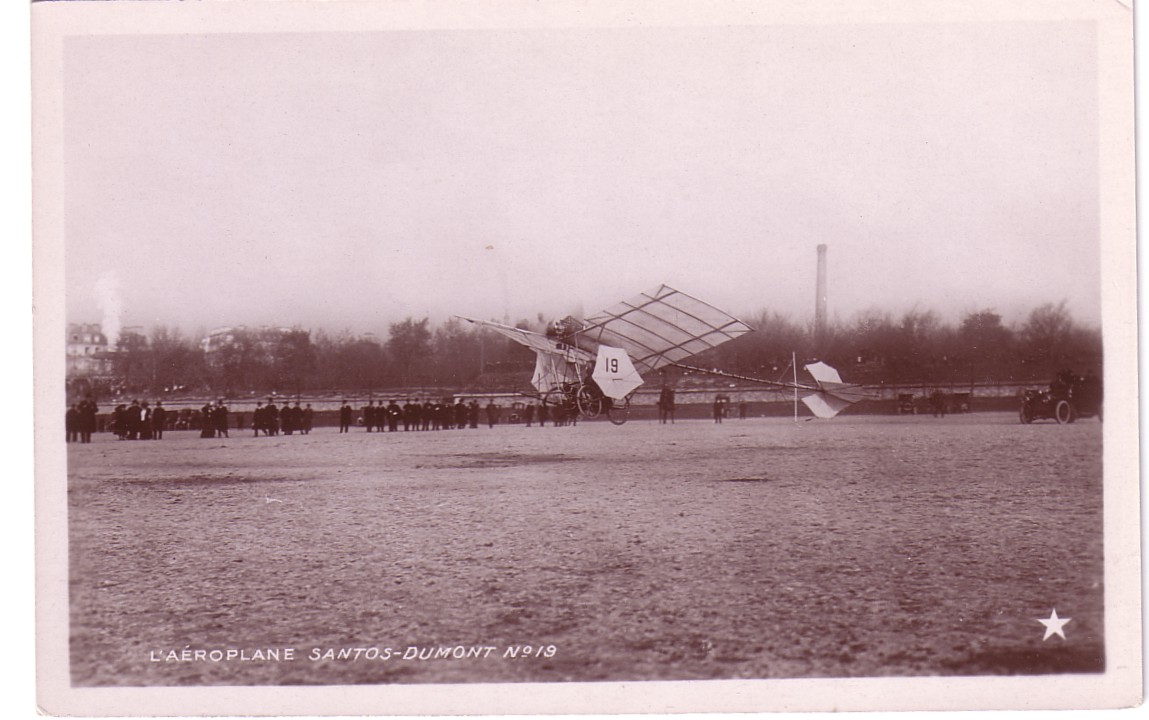
He retired to the French coast and took up astronomy which resulted in his being raided by the police as a suspected spy. During his deepening depression he destroyed all his papers . He returned to Brazil and lived there until 1932 when he committed suicide. In addition to the effects of his illness he was believed to be greatly troubled by the use of aircraft in war. In Brazil his achievements have to some extended been promoted at the expense of the Wrights but his achievements, in particular with the Demoiselle, mean he stands on his own merit as a significant pioneer. Tens of thousands of streets, buildings, schools etc in Brazil are named for him in addition to the original and now regional airport of Rio.
The June edition will feature Phil Swales’ in depth researches into 30 s aviation artist, Howard Leigh. Leigh was the brother-in-law of Biggles author W E Johns and illustrated his books and their covers. He also produced artwork for books and postcards featuring the latest designs of the time and some retrospective WW1 craft. The cards were sold in sets, some with PC backs, some plain – not all are signed. For those unfamiliar with his work here are two examples as a foretaste. The untitled example is a Hafner Gyroplane.
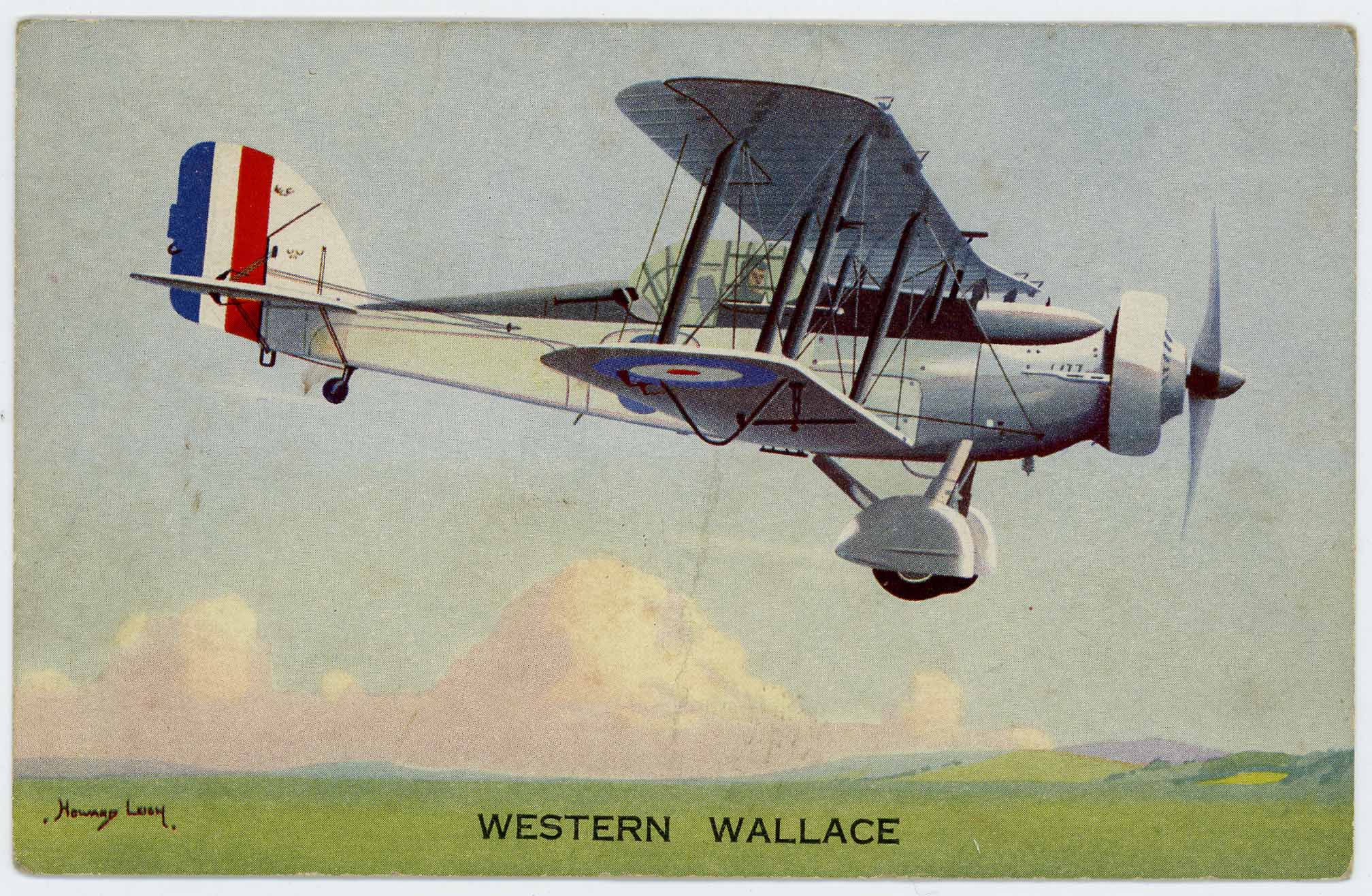
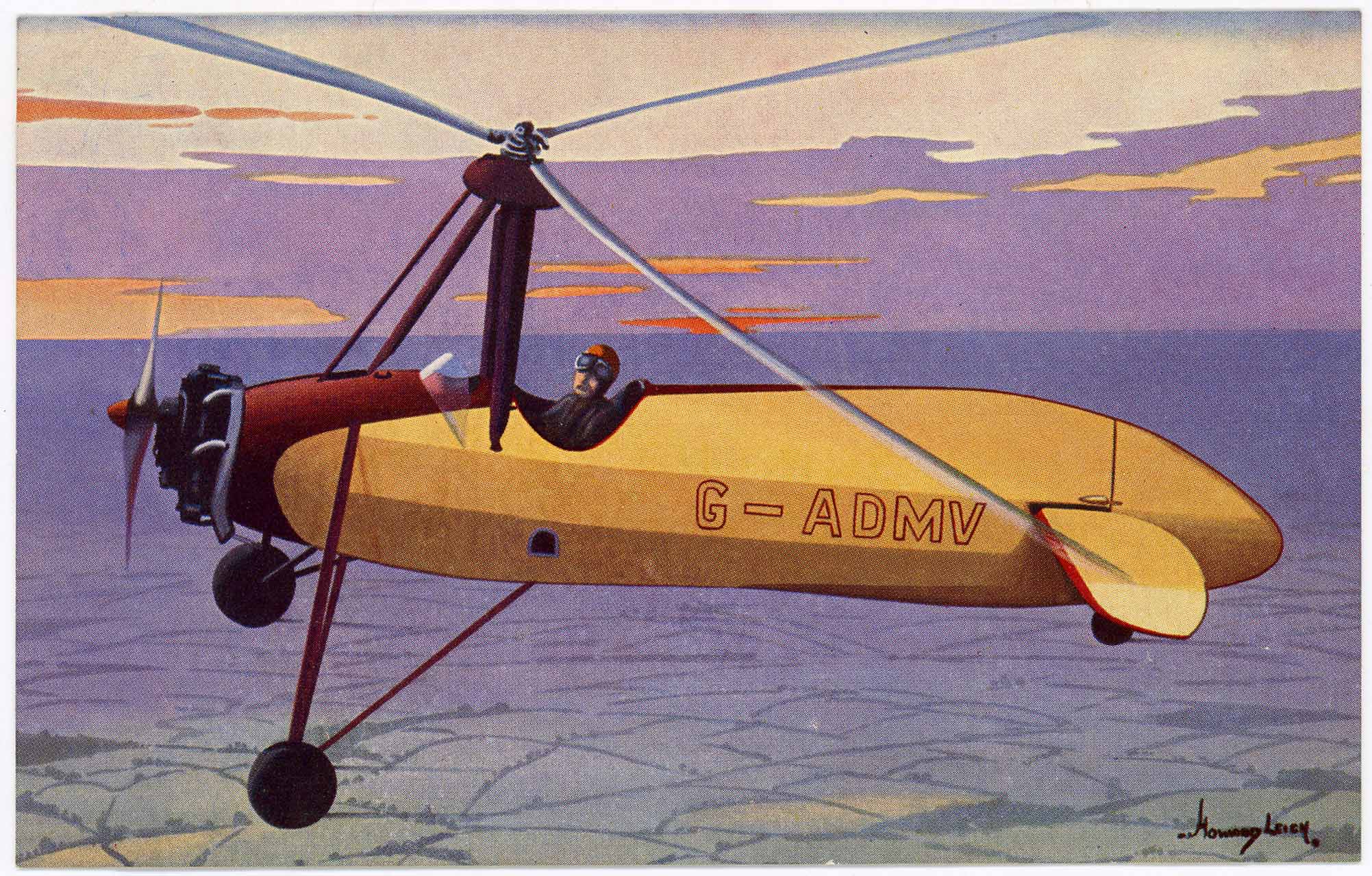
|